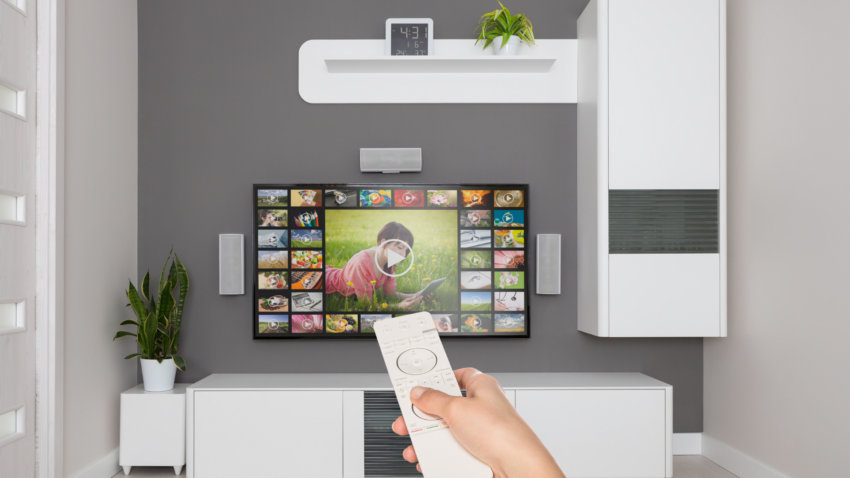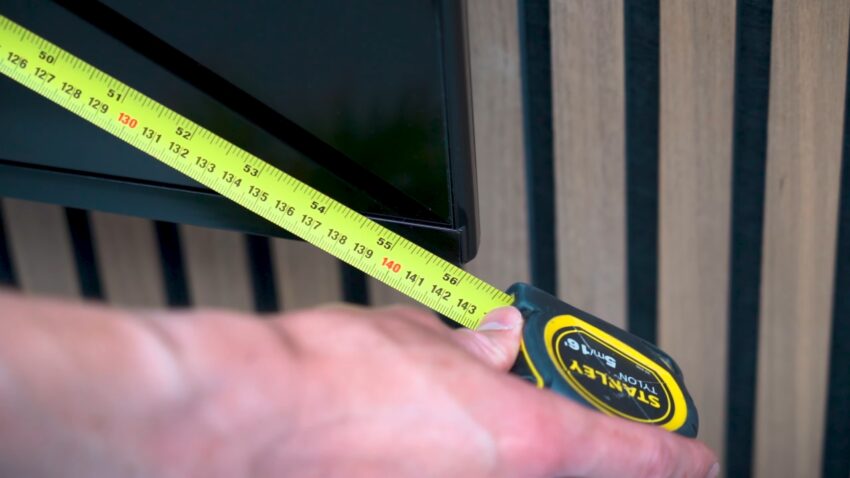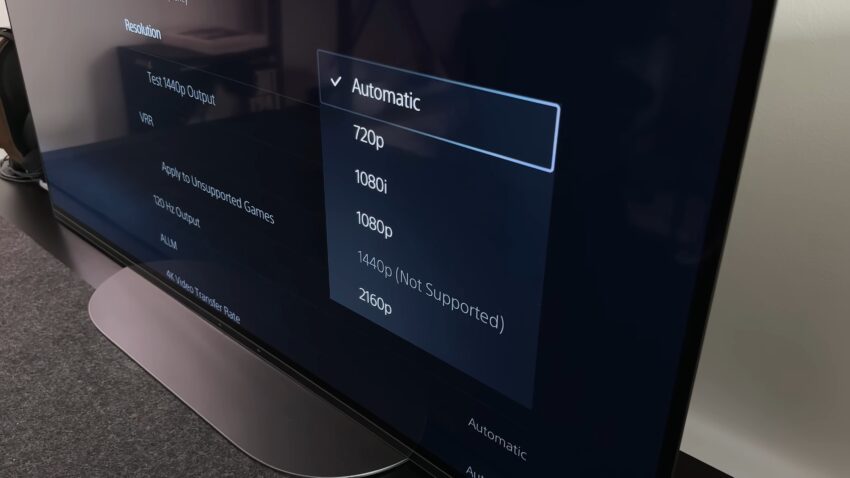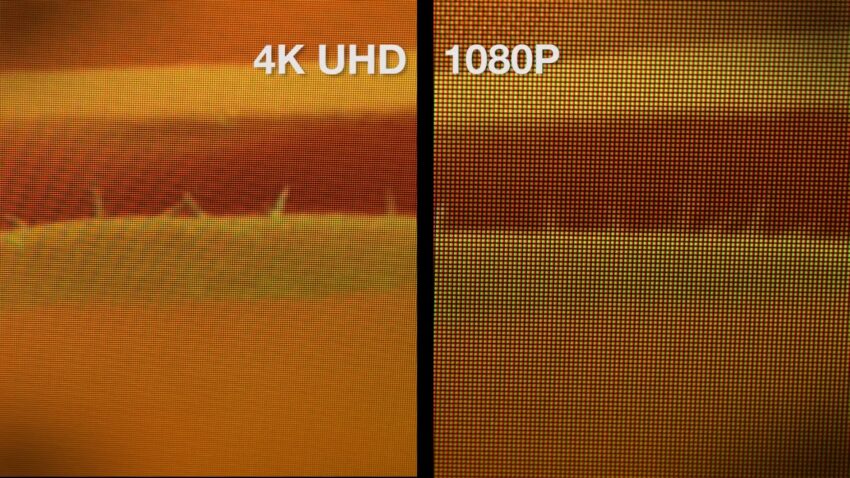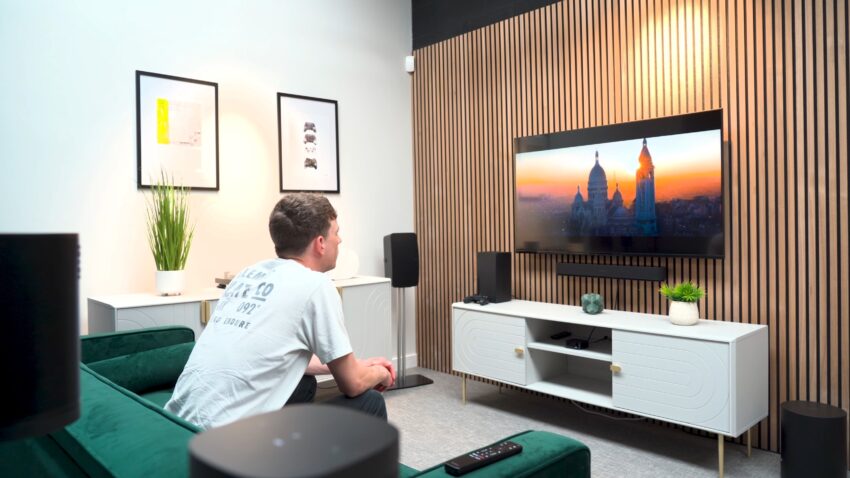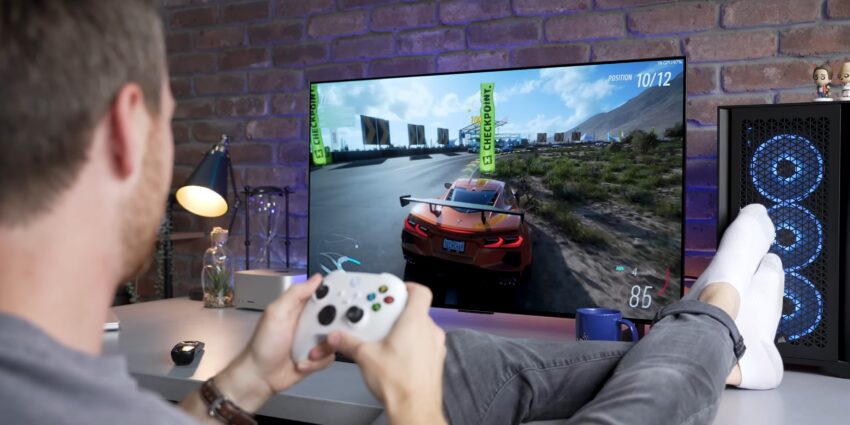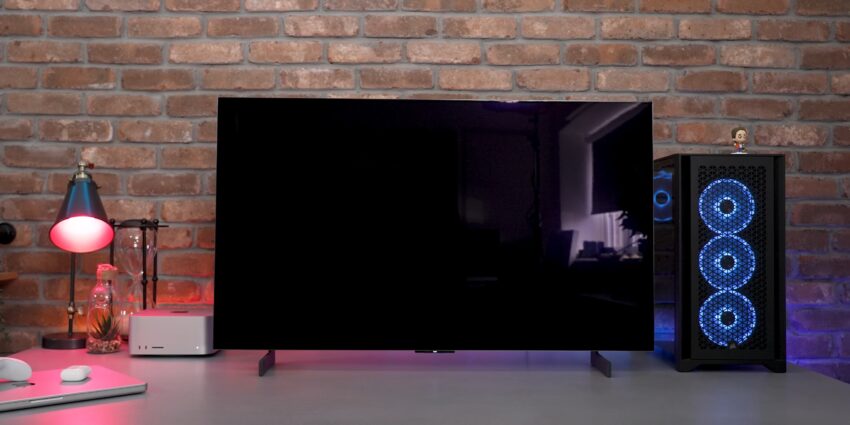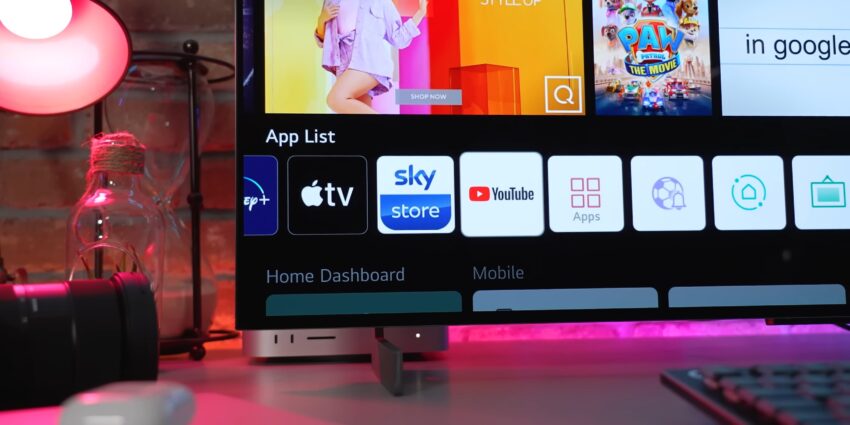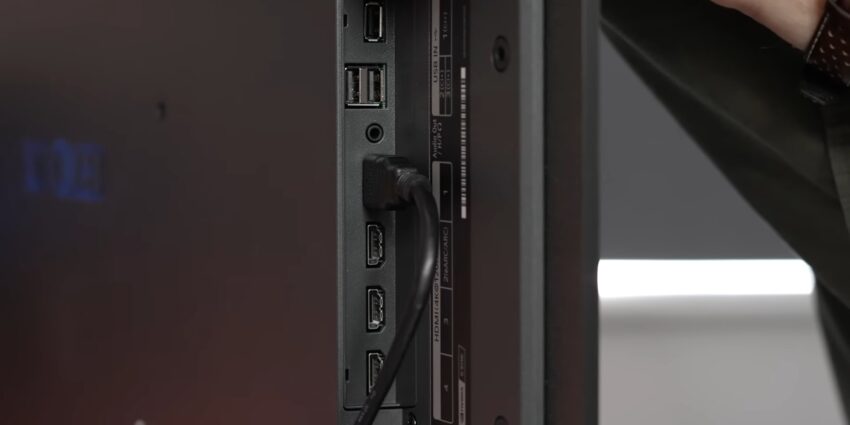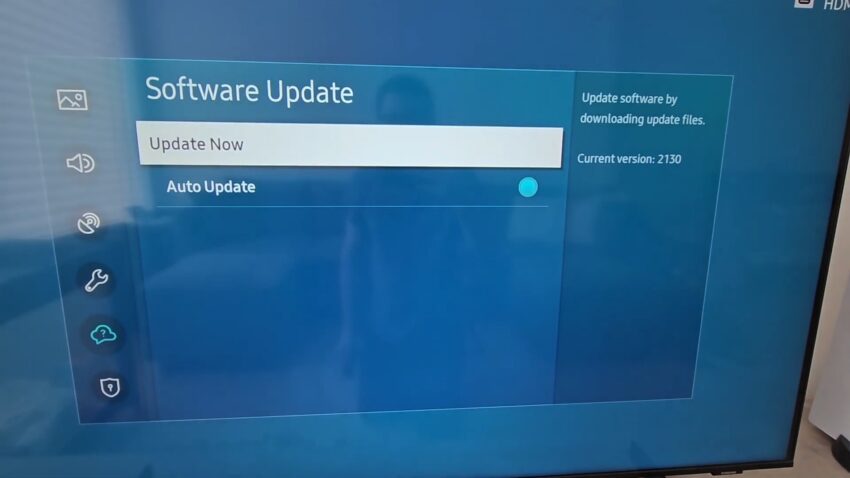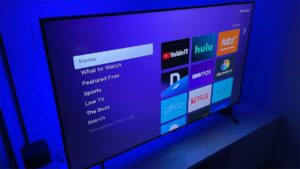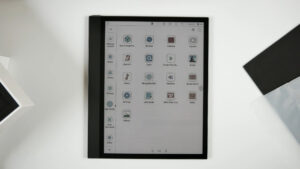Choosing the right display can be a challenging endeavor, especially when you’re staring at rows of models with almost identical features. It’s like you’re lost in a sea of screens!
Today, we’re going to narrow it down and focus on the 42-inch and 50-inch 16×9 displays. So, grab some popcorn as we will discuss the world of pixels and aspect ratios!
The Basics
Before diving into the specific sizes, it’s important to understand the basics. Aspect ratio and screen size are the foundation of your display experience.
Importance of Aspect Ratio
The term “16×9” refers to the aspect ratio, which is essentially the width-to-height ratio of the display. In simple terms, for every 16 units of width, there are 9 units of height. This ratio has become the standard for modern televisions and monitors, replacing the old 4:3 aspect ratio.
A 16×9 aspect ratio offers a wider field of vision and is more suited for today’s widescreen content.
- Movie Experience: More cinematic, less need for letterboxing.
- Gaming: Offers a broader field of view.
- Work: More screen real estate for multitasking.
Relevance of Screen Size
Screen size is measured diagonally in inches, from one corner to the opposite corner. Larger screens provide a more immersive experience but take up more room. Size matters, but bigger is not always better.
It often depends on the room size, viewing distance, and what you intend to use the display for.
- Home Theater: Larger screens are generally better.
- Work: Balance between size and desk space.
- General Use: Depends on personal preference and room dimensions.
Comparing Screen Resolutions
Screen resolution refers to the number of pixels that make up the display. Higher resolutions mean more pixels, leading to a sharper and clearer image.
42-Inch Variation
A 42-inch 16×9 display typically offers a resolution of 1920×1080 (Full HD) or 3840×2160 (4K). These are great options for smaller rooms or for people who don’t need an ultra-large screen.
- Full HD: Sufficient for most purposes, including watching movies and gaming.
- 4K: Offers greater clarity, but you need compatible content to truly benefit.
50-Inch Variation
A 50-inch display, meanwhile, often starts at a 4K resolution. This is a remarkable advantage if you’re looking to make the most out of ultra-high-definition content.
- Sharper Image: Ideal for watching 4K movies or playing high-definition video games.
- Productivity: More pixels mean you can fit more content on the screen, which can be a boon for work-related tasks.
Placement & Viewing Distance
The right display also depends on where you’re going to place it and how far you’ll be sitting from it.
Living Room Scenario
For a living room setup, a 50-inch display often fits better as it offers a more cinematic experience, especially in a larger space.
- Visibility: Larger text and images, easier to see from a distance.
- Immersion: Better for movies and video games where you want to feel a part of the action.
Office or Gaming Setup
In an office or for a dedicated gaming station, a 42-inch display can often be more practical.
- Desk Space: Takes up less room, providing space for other essentials.
- Ergonomics: Easier on the neck and eyes when sitting up close.
Price Factor
Budget considerations are always crucial when choosing a display.
Upfront Cost
Larger screens are generally more expensive, and this holds true when comparing a 50-inch to a 42-inch display.
- Premium Features: Larger displays often come with additional features like smart capabilities or better speakers.
- Materials: More material means a higher production cost, which gets passed on to the consumer.
Running Costs
Although the difference is often negligible, larger displays do consume more electricity.
- Power Consumption: A larger screen often requires more energy to operate.
- Lifespan: Consider the long-term investment, including potential repairs and part replacements.
Pros and Cons
Every size has its advantages and drawbacks.
42-Inch Display
- More affordable
- Takes up less space
- Often sufficient for standard content
- Smaller field of view
- Less immersive experience
50-Inch Display
- More immersive for movies and games
- Usually starts at higher resolutions
- Can be better for multitasking
- Higher cost
- Takes up more space
Additional Considerations
In our journey through pixels and inches, there are other features and aspects to look at. These may include smart capabilities, audio options, and the type of panel used in the display.
Smart Features
Today, many displays come with built-in smart features, like voice assistants and streaming apps. While not directly related to screen size, these features often come as standard options on larger displays.
- 42-Inch: Basic smart features can be found in most modern 42-inch displays.
- 50-Inch: Advanced smart features like better integration with smart home systems are more commonly found in larger displays.
Audio Options
The sound experience is equally important as visual elements. Some larger screens come with advanced audio settings or even built-in soundbars.
- 42-Inch: Likely to offer basic audio options suitable for smaller rooms.
- 50-Inch: Higher chances of having superior audio systems, possibly with Dolby Atmos support.
Panel Types
The kind of panel technology used in a display can significantly impact image quality.
- 42-Inch: You’ll find a variety, but IPS panels for better viewing angles are common.
- 50-Inch: Higher likelihood of having premium panels like OLED for better contrast and color accuracy.
Ease of Setup
Believe it or not, the ease of setup can also be a determining factor in your choice.
Wall-Mounting
If you’re planning to wall-mount your display, consider the weight and dimensions carefully.
- 42-Inch: Generally lighter and easier to mount.
- 50-Inch: May require more robust wall supports due to higher weight.
Port Accessibility
How easily can you reach the HDMI or USB ports once the display is set up?
- 42-Inch: Usually easier to reach given the smaller size.
- 50-Inch: Can be a challenge if mounted close to a wall, but some models offer side-accessible ports.
Long-Term Usage
A display is an investment that you’ll use for several years, so think long-term.
Future-Proofing
Technology evolves rapidly; your display should be able to keep up.
- 42-Inch: If opting for a lower resolution, you might find it outdated sooner.
- 50-Inch: Higher chances of being 4K or even 8K, which could be more future-proof.
Software Updates
Manufacturers often roll out software updates to keep your display running smoothly.
- 42-Inch: May receive updates, but likely to be phased out sooner.
- 50-Inch: Often receives updates for a longer period, particularly if it’s a premium model.
FAQs
Are there any differences in power consumption between a 42-inch and a 50-inch display?
Yes, larger screens usually consume more power than smaller ones, but the exact amount depends on the specific model and technology used. For instance, LED panels are generally more energy-efficient than older LCD or plasma screens. Always check the energy rating when making your purchase.
Do I need special cables or accessories if I choose a 50-inch display over a 42-inch one?
The type of cables needed usually depends on the ports available on the display and not the size. However, if your 50-inch display has more advanced features, like a higher refresh rate or 8K resolution, you may need high-speed HDMI cables to fully benefit from those features.
Similarly, a bigger screen might come with enhanced audio options that could benefit from a more advanced audio setup.
Is wall-mounting easier for a 42-inch compared to a 50-inch display?
Wall mounting usually depends on factors such as the weight of the display and the robustness of your wall. Generally speaking, a 42-inch display will be lighter and potentially easier to mount.
However, both sizes will require strong wall anchors and should be installed by someone who knows what they are doing to ensure safety and stability.
Can I use a 50-inch display as a computer monitor? Would it be too big?
You can certainly use a 50-inch display as a computer monitor, but whether it’s “too big” depends on your specific needs and setup. For tasks requiring a lot of screen real estate, such as video editing or multitasking across multiple windows, a large screen can be beneficial.
However, you’ll need a spacious desk and should consider the ergonomics of such a setup, including the viewing distance and height of the display.
What types of warranties are typically available for 42-inch and 50-inch displays?
Warranty terms can vary widely depending on the manufacturer and the specific model. However, most reputable brands offer at least a one-year warranty covering parts and labor.
Premium or larger models like a 50-inch display may offer extended or more comprehensive warranty options, so it’s wise to check and compare warranties when making your decision.
Can I use both sizes for console gaming, and is one better than the other?
Yes, you can use both 42-inch and 50-inch displays for console gaming. The “better” option depends on your gaming style and setup. A 42-inch may be more suitable for fast-paced games where you’re sitting closer to the screen and need to take in information quickly.
A 50-inch display offers a more immersive experience that is excellent for story-driven or open-world games. Make sure to consider the display’s refresh rate and response time, as these also impact your gaming experience.
Final Verdict
Both 42-inch and 50-inch displays have their merits. Your choice largely depends on your specific needs, room size, and budget. For smaller rooms or office setups, a 42-inch display often suffices. But for an expansive living room and a more immersive experience, a 50-inch display is usually the better option.
The technology and features are often similar; it’s the size and its implications on your experience that make all the difference. Whichever you choose, ensure it ticks all the boxes for what you intend to use it for.


